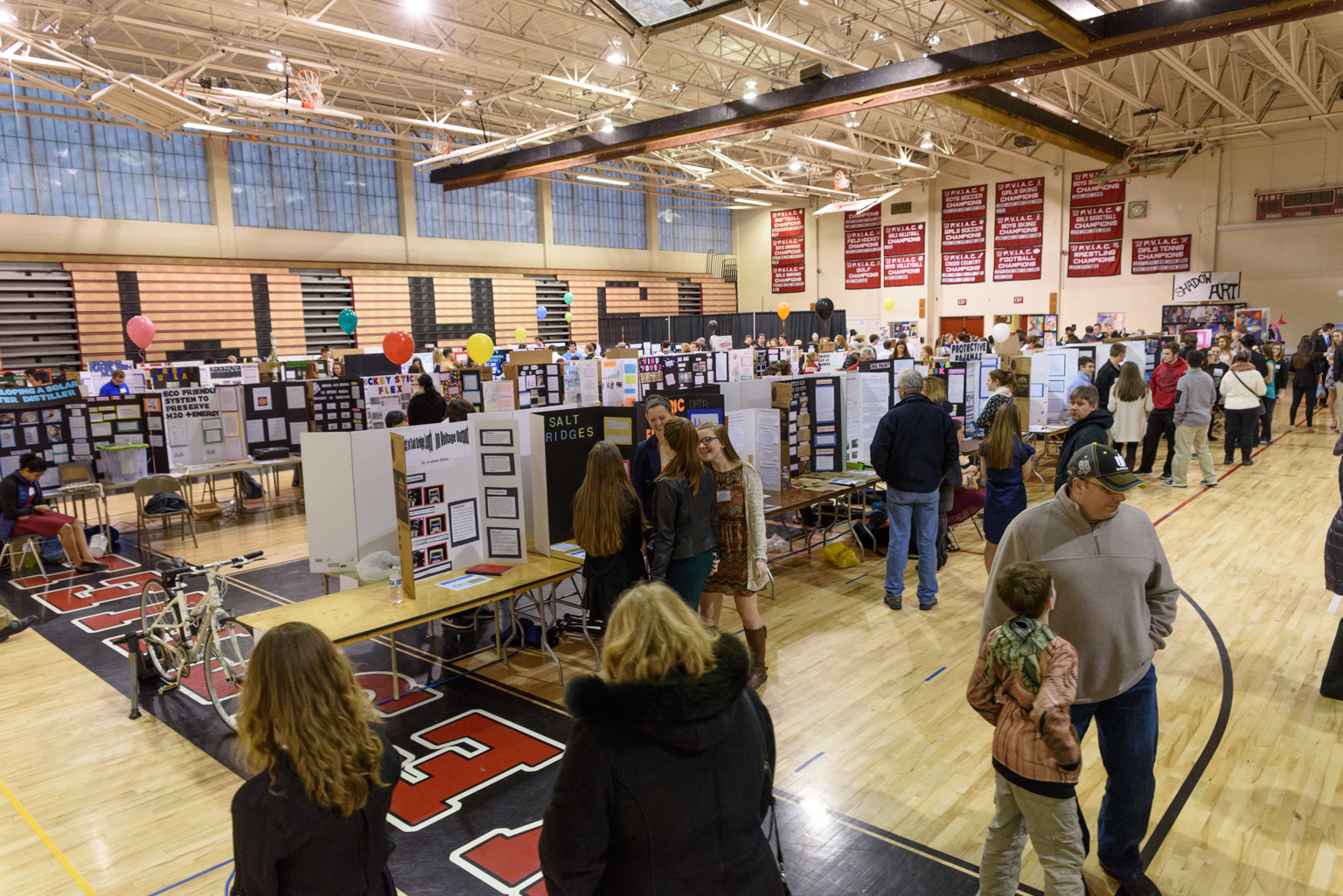WESTFIELD – Almost 250 student projects were on display for the public at the Westfield High School Science Fair Thursday evening, following a day of judging by 60 guest judges from area businesses, universities, former students and teachers.
At the end of the day, 15 projects advanced to the regionals, which will be held on March 11 at the Massachusetts College of Liberal Arts in North Adams. Four alternates were also selected, and students will have the opportunity to participate if any projects drop out.
Science Department Chair Donna McKay said Westfield is one of the few area schools to hold a science fair at the high school level.
“Some schools just go on to regionals,” she said. “Typically, many of our students in regionals then go on to states.”
Last year, 18 projects advanced to the Region I Fair, and most continued on to the State Science Fair hosted by the Massachusetts Institute of Technology in Cambridge.
One project, Alison Adamski’s SMART House: Utilizing Embedded Electronics for Efficient Living, also went on to participate at the international level of competition held annually in Phoenix, Arizona.
The judges at the Westfield fair also select a first, second and third prize winner, who receives a check for $300, $200 and $100, respectively.
First prize winners this year were Zachary Medeiros and Liam Coffey, both tenth-graders, for “Using the Magnus Effect to Improve Efficiency of Aircraft Propulsion. Medeiros said the project originated when his partner Liam Coffey saw a YouTube video where a basketball was dropped off of a dam while spinning. The spin made the ball soar forward due to the Magnus effect, which makes a spinning ball (or cylinder) curve away from its principal flight path, as seen during some baseball pitches.
Medeiros and Coffey wondered if rotating cylinders would make a drone fly more efficiently than propellers. They took a four-propeller drone and replaced the propellers with spinning rotors which they designed and printed out using 3d technology. They then ran a series of tests on a drone with propellers versus one with rotors.
“The rotor performed significantly better in both holding one meter height and in reaching one meter,” Medeiros said.
They then measured its maneuverability in an obstacle course they designed, by attaching the rotors to the drone’s four separate points of rotation and making it more stable, a concern due to the Magnus effect.
“The application is what’s really cool about it,” Medeiros said. “By combining a rotor with a conventional air foil, you could make a design with an in-wing rotor. This would allow for a very small motor to control the rotors.”
“You’ve got overall less fuel consumption, more lift, efficiency and practicability. Save fuel, save cost, save the environment.”
Medeiros said last year the project made it to the state finals with the same wind tunnel design that was used this year to test the drones.
His mother Adrienne Medeiros, who was present when the project won first place, said she was very proud of her son.
“He worked really hard,” she said, calling the past few months a time of “high stress.” She also said she had just one rule for the drones: “Not in the house.”
Many of the student projects were concerned about the environment and economic efficiency. Second-place winner Clarisse Jones’ project was called: “Designing an Inexpensive Hydraulic Prosthetic Hand.”
Jones said her goal was to design a prosthetic for as little money as possible, for a field that is expanding very fast.
“As they get more sophisticated, they get more expensive,” she said. “There are advanced ones you can move with your mind that are half a million dollars.”
Jones’ prosthetic hand was created using hydraulics vs. robotics. She demonstrated by pulling back on a syringe, which contracted the fingers, then pushing on the syringe, expanding the fingers. She said she would like to continue her research by using a hydraulic pump that fits inside of the arm instead of the syringe, allowing for a functioning prosthetic.
Jones, who is a senior taking AP chemistry and physics, became interested in robotics and prosthetics after seeing an interview on TV about a man who had lost both his legs in a crash. The host of the show gave the man prosthetics and therapy, and Jones was moved by the impact they had on his life.
Third place winner Christopher Clark was thinking about the environment and economics when he developed his Algal Biofuel Production project. Clark, a senior, said his project was also a continuation project from the previous year, when he explored which algae might prove most useful to grow for biofuel production.
This year he based his concept on a micro-industrial cost analysis of growing the algae all the way to its conversion to biodiesel, hypothesizing if growing the algae would yield a sufficient amount of dry mass for production of biodiesel at an equitable cost.
Clark said the results showed that using the method of photobioreactor on an open pond produced a sufficient amount of algae to be useful for biodiesel production. He said now that he is going to regionals, he will do more research on refining the limpid extraction of the oil, to produce a liquid that is usable in a diesel engine. Clark said his dream job would be to work on environmental policy and environmental law for the United Nations.
“I’m really impressed by the quality of the projects this year,” said physics teacher Renee Sweeney, co-coordinator of the Science Fair. “Every year they show such amazing things.”


